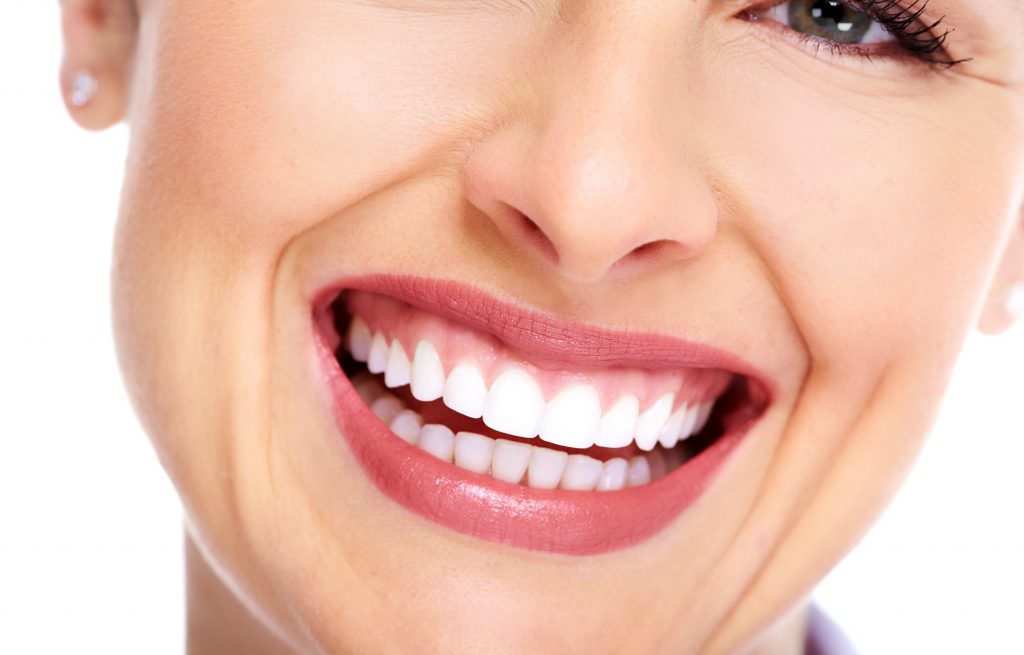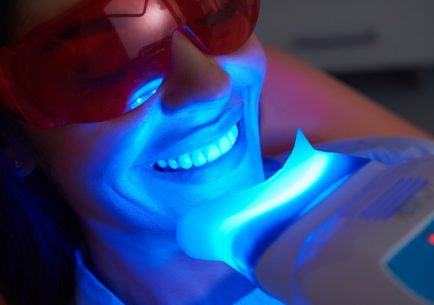Aesthetic interventions
- Teeth whitening
- Dental veneers
- Gingivoplasty procedures

Services
Theet whitening
Teeth whitening has become a routine dental aesthetic procedure. A confident and beautiful smile is an instant eye-catcher. There are various key methods in the field of aesthetic dentistry. In today’s world it is important to be confident, and this can be achieved by keeping your teeth well-groomed and snow-white. This will make you more confident, give you energy and thus inspire confidence in others.
Over the years, our teeth become increasingly discoloured as a result of our daily routines (e.g. coffee, tea, red wine, smoking). Toothpastes promoted in the media as whitening toothpastes are basically unable to lighten the colour of the teeth and restore the possibility of an aesthetic and beautiful smile. We offer you an effective and safe way to achieve the smile you want and the most beautiful pair of teeth in your environment.
Teeth whitening involves the application of a gel on the surface of the tooth, which fades or eliminates discolouration with the help of the oxygen released, so that the teeth can regain their original beauty. In many cases, our patients ask us whether teeth whitening is harmful to the teeth. The answer is no. These dental materials are designed in such a way that they cannot damage the tooth tissue in any way.
Today’s dental laser equipment speeds up the process, which has been reduced from 1-1.5 hours to around 20-25 minutes.
The treatment procedure:
- gum protection mask is applied
- application of whitening material
- a few minutes of laser illumination
Immediately after the treatment:
- avoid coloured food and drinks
- avoid smoking


Dental veneers
Porcelain veneers can be a solution when there are minor problems with the colour, shape, fracture or or if there are gaps between teeth. Veneers form a thin layer on the surface of the tooth and are most commonly used on the upper front teeth, giving the patient a new, beautiful, aesthetic and complete smile. Thanks to revolutionary new technologies, we can also change the translucency, giving back the perfect “Hollywood” smile to our patients.
In our clinic we use so-called direct veneers. The tooth preparation is made and the abutment is added during the same appointment. For this kind of work, we apply a special filling material or several shades of it. The adhesive is also different from that used for traditional fillings. The advantages of this method are speed and repairability. In other words, if the veneer is damaged, or if it falls off, the repair can be done easily, without having to remove the whole veneer, it is enough to replace the damaged part. Traditional, indirect veneers are made of ceramic and are made by a dental technician. Repair is not possible with these.
If the veneer ceramic is damaged, the teeth can become discoloured, so it is advisable to see your dentist in time. Notorious tooth grinding can accelerate the wear of the restoration or even break it off. In this case, it is worthwhile to solve the problem of tooth grinding, for example by using a bite guard.
Gingivoplasty procedures
Gingivoplasty involves several types of procedures, which include:
1. vestibuloplasty:
A surgical procedure used in advance in case of complete removable restorations. If there is not enough tight mucous membrane at the top of the jawbone to which the restoration can adhere, we are able to “lengthen” the non-displaceable mucous membrane. This allows the restoration to gain surface and to adhere better. In this case, a surgical procedure is used to lower the protrusion at the base of the jawbone ridge. After a few weeks of healing, we can start making the restoration.
2. Frenulectomy:
Usually needed for orthodontic (teeth splinting) treatment. During the procedure, the reinforced fibres of the lip and frenulum are removed under local anaesthesia using a laser, ensuring that the mucous fibres adhering to the roots of the teeth continue to help facial expression and lip movement in their normal physiological position. In some cases, it is the frenulum that is inhibiting the production of sound, in which case we also cut through the abnormally thickened fibres of the frenulum. It takes a few weeks to heal.
3. Smile design:
Designing the smile. Textbook examples can be used to illustrate the perfect smile. If the patient wishes to restore the aesthetics, we can model and discuss the desired result beforehand using a mock-up model. Aesthetic restorations may also include the correction of gums and teeth. We are able to usually correct the gums with a laser and make the teeth more beautiful with dental veneers or crowns




